Warning: Undefined variable $k in /home/nginx/domains/wired2fishcom.bigscoots-staging.com/public/wp-content/themes/understrap-child-0.6.0/functions.php on line 984
Warning: Undefined variable $k in /home/nginx/domains/wired2fishcom.bigscoots-staging.com/public/wp-content/themes/understrap-child-0.6.0/functions.php on line 987
A neat little rig has caught the eye of several anglers lately. I’m not sure exactly when it was deployed for the first time or by whom, but I myself dabbled with it for the first time over three years ago. A few other videographers and I were trying to come up with 48 ways to rig Missile Baits’ new soft plastic, The 48 Worm.
That was my first and only experience with this rig until recently, as I started to hear more and more about it. So I broke it back out and compounded some new experiences to go with the old. Today, we’re going to talk about those experiences fishing the free rig.
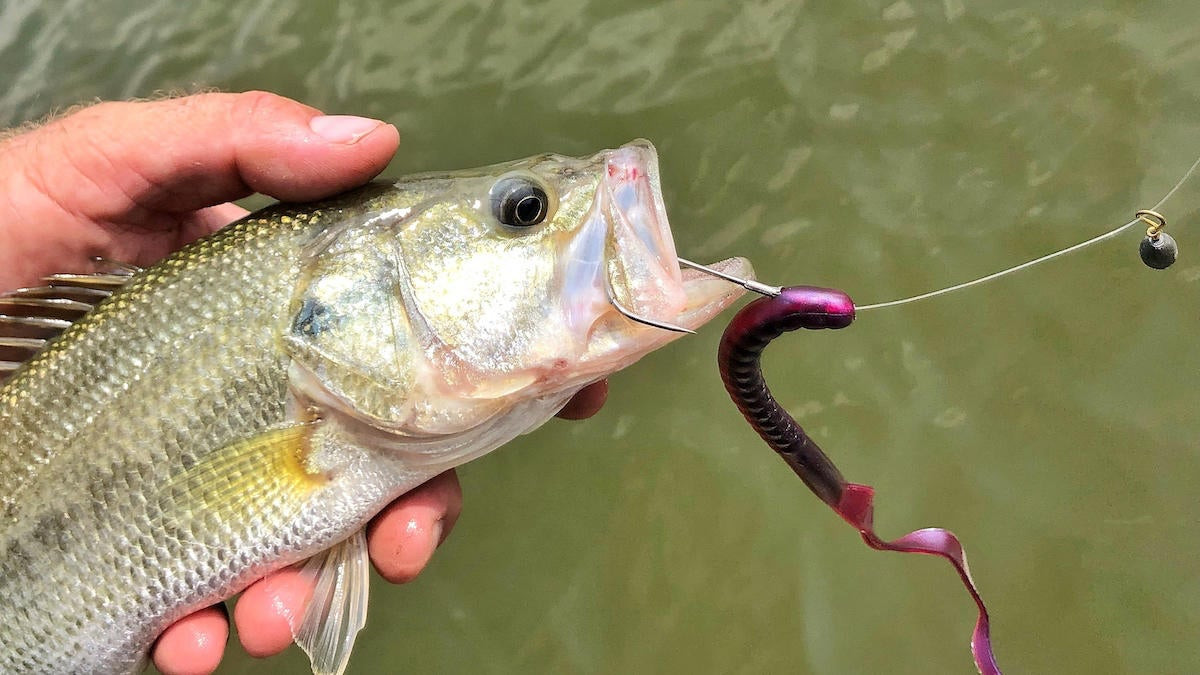
Basic setup
At its bare bones, the free rig is a pretty eloquently simple presentation. The “free” in the name refers to the way the weight is able to move freely up and down the line. This also allows the bait to move freely, so perhaps a double entendre is afoot. To set this rig up, take your line and run it through the loop of a bell weight. Then tie on your preferred hook and add your preferred soft plastic.
There are dozens of options here to make this rig unique to your personal preferences. You can use a straight-shank flipping hook with a creature bait, an EWG hook with a tube or a traditional offset worm hook with a finesse worm. A bell weight isn’t even necessarily required, either. There are other weights that have similar metal loops or rings that are molded into them that make for great options as well. I simply already have bell weights for other presentations in my box and they work well, so that’s what I use. But there’s another common weight in most anglers’ boxes that can be modified in a pinch to use with the free rig as well.
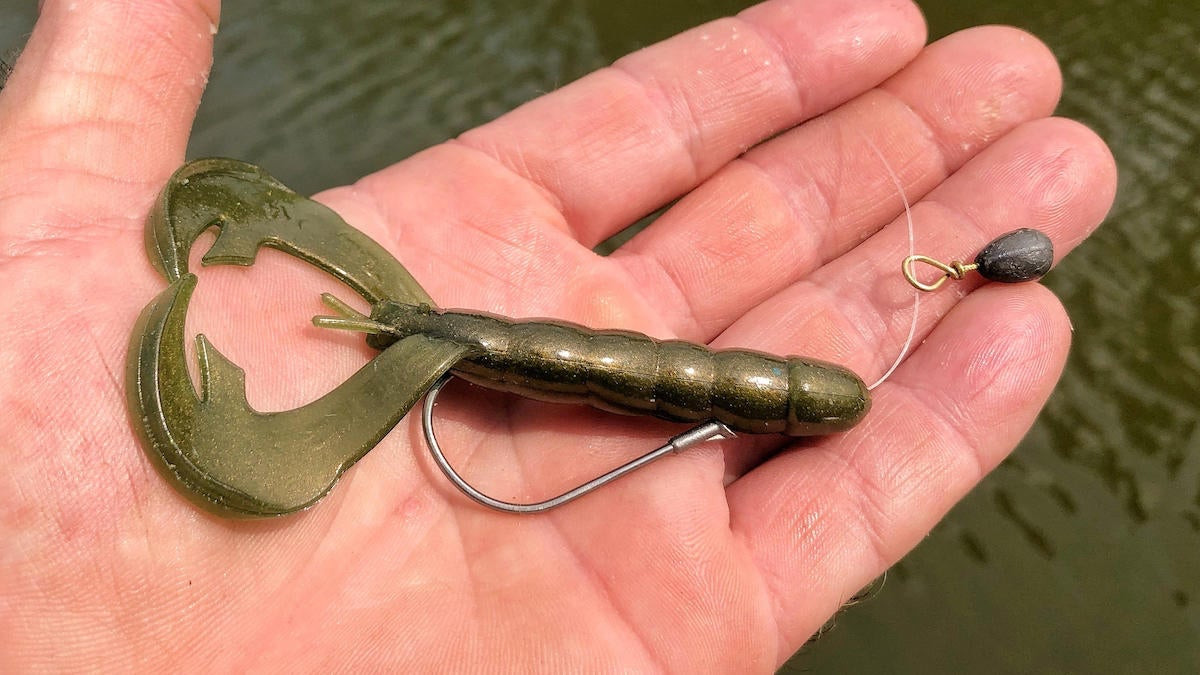
Not a Texas rig, not a Carolina rig
Though the free rig has some parallels with these two presentations as well as a few others, it truly is its own deal. A Texas-rigged worm with an un-pegged bullet weight is probably the free rig’s closest relative. But what you’ll see is that the weight on the free rig has way more range of motion up and down the line than even an unpegged bullet weight. So the soft plastic lure is able to drift around more and better mimic a natural, subtle living creature.
The Carolina rig is also pretty similar at first glance, but the lack of a swivel separating the weight and soft plastic sets the two rigs apart. And the Carolina rig’s fixed leader is often much longer than the the shorter, continuously changing distance between the bait and weight of a free rig. But the primary way you fish the two rigs is very similar. You can bounce a free rig similar to the way you would a Texas rig or shaky head. But a slow drag with intermittent pauses is best, and allows the bait to move around more and make the most of the free rig.
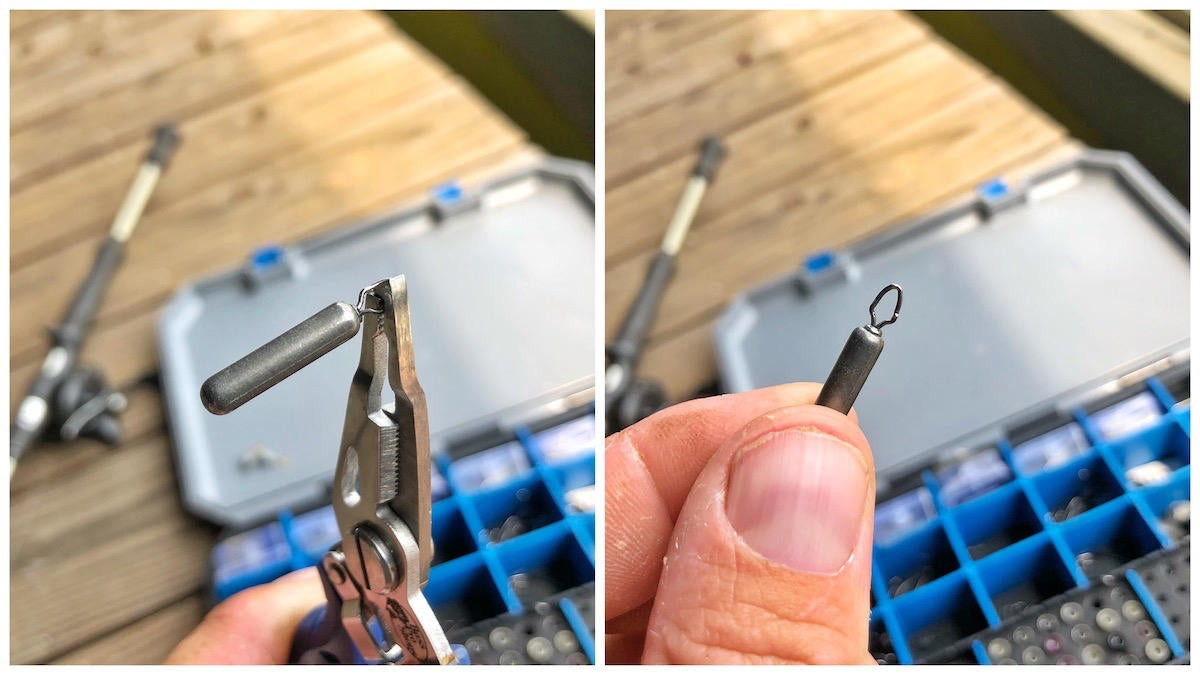
Modified drop shot weight
Most anglers these days have drop shot weights in their tackle boxes; they’re nearly as common as bullet weights it seems. So if you want to give this rig a try and you don’t have a bell weight in your box, you can take split ring pliers and open up the metal eye that most drop shot weights have. These are usually used to pinch the line when rigging a drop shot, but if you carefully take your split ring pliers and open it up, you can create a loop that will allow your line to flow freely through it.
You want to be very careful though when doing this not to create sharp edges or burrs on the metal. It’s easy to create a sharp place that might then fray or even break your line while fighting a fish. Using drop shot weights versus bell weights also gives the angler various weight shapes which helps prevent snags in different types of cover. For instance, cylindrical weights work better in grass and rocks. But the bell weight or tear drop shape works better on bare or mucky bottom.

Power and finesse options
The free rig can be used with both a baitcaster and a spinning rod. You can fish this rig with a 1/2-ounce weight and 20-pound test on a ledge for big largemouth if you’d like or with an 1/8-ounce weight and 8-pound test in open water for smallmouth. And the free rig gives you an alternative to a drop shot to pitch somewhat vertically as well around brush for spotted bass.
I say “somewhat vertically” because the free rig doesn’t exactly fall vertically. On a slack line the weight falls fairly straight but what you’ll see is that the soft plastic quickly separates itself from the weight. Again, this only happens on a slack line. If you simply cast out and let the bait fall on a tight line, the free rig will stay compact and pendulum back towards the boat.
But on a slack line the bait is able to separate a bit. Which is the beauty of the free rig and what makes it different from other similar rigs. Allowing the rig to fall this way makes helps start the presentation off correctly as soon as the bait reaches the bottom.
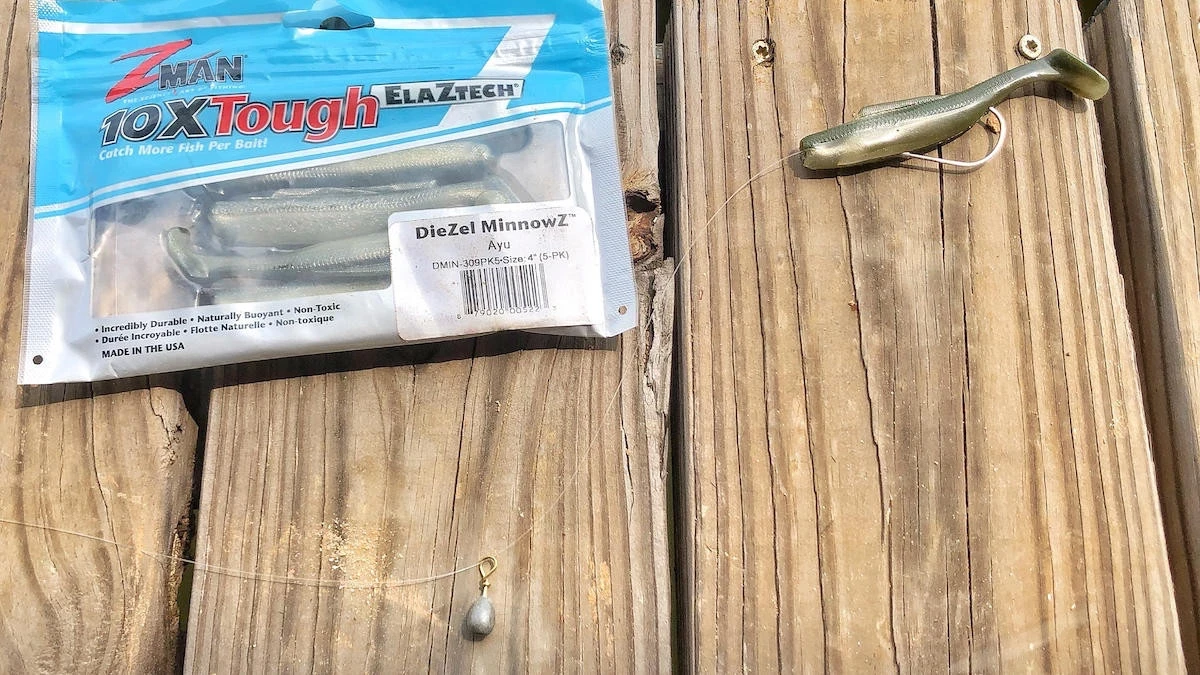
Free rig, on a whole different level
Now if you really want to amp things up, add a Z-Man ElaZtech soft plastic to your free rig. Where most soft plastics sink, or at best kind of suspend, Z-Man’s ElaZtech material floats. So as you pause your free rig and drop your rod tip, the soft plastic will start to float up as the weight stays on the bottom and the line slides through the loop. Then as you make another drag, the soft plastic will be pulled back down to the bottom where the weight is.
With slow movements and a methodical cadence, you can create a really effective presentation where your bait mimics a small fish, worm or crawfish swimming up a foot or two and back down to the bottom over and over throughout your retrieve. Something fish rarely see artificially replicated on a horizontal presentation, but more like what you might be able to accomplish in one spot vertically fishing a drop shot. This allows you to cast and cover more ground with a similar presentation to a dropshot, without having to position your boat directly over the fish.
Z-Man DieZel Minnowz
Available at:
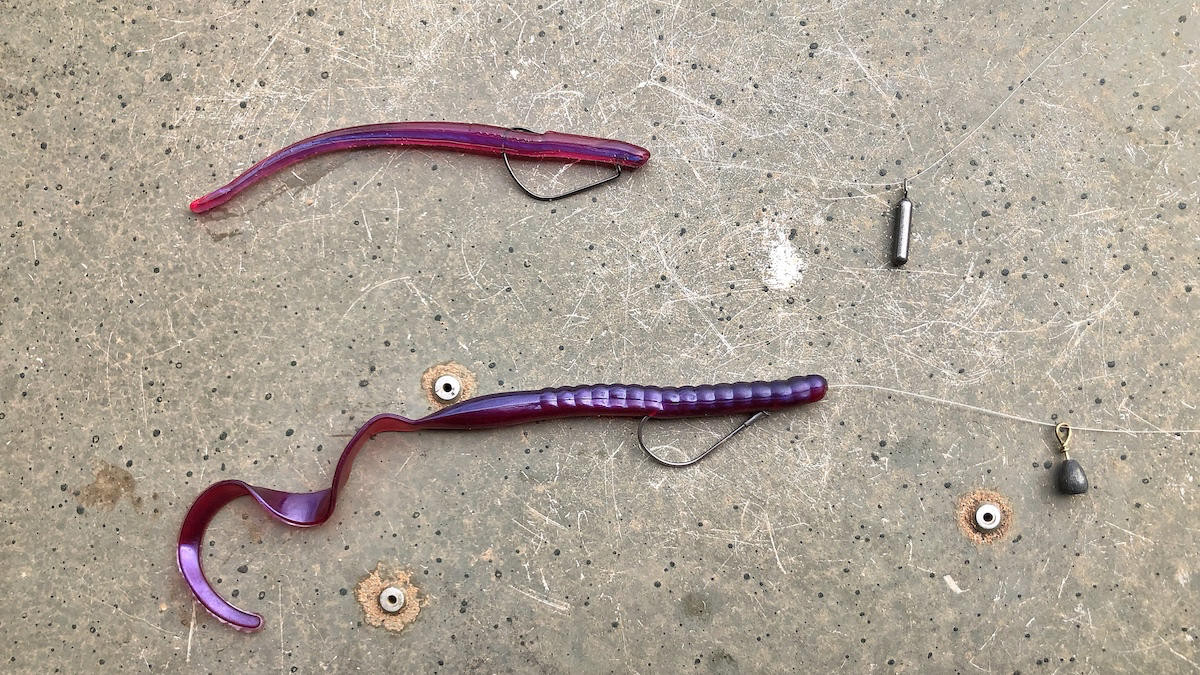
In conclusion
The free rig is one of the most versatile rigs I’ve ever used. From the variety of weights, hooks, line sizes and soft plastic that work with this rig to the fact that this it performs well on both a baitcaster and spinning rod, there really isn’t any angler out there who wouldn’t benefit from adding some version of the free rig to his or her arsenal.
As fishing pressure continues to increase and technology advances, it seems subtle shifts in presentation make a bigger difference by the trip. In the past, I could pull up on a brush pile in 13 feet of water and drop a drop shot on a fish sitting in the top of it, 5 feet below the trolling motor and catch it on the first drop. Now with forward-facing sonar and hundreds of thousands of new anglers hitting the water the last year or two, those days are long gone.
The free rig gives a subtle presentation to the avid angler who needs something a little different to set himself apart; it’s also a simple presentation to rig and fish that even a brand new angler can use to get bit. Definitely been a fun and productive rig to fish and one I’d recommend giving a shot.












